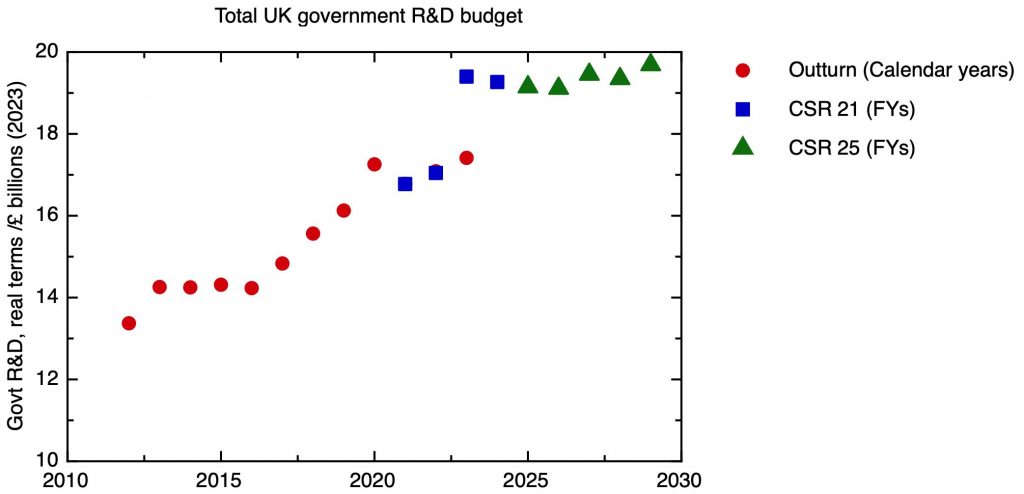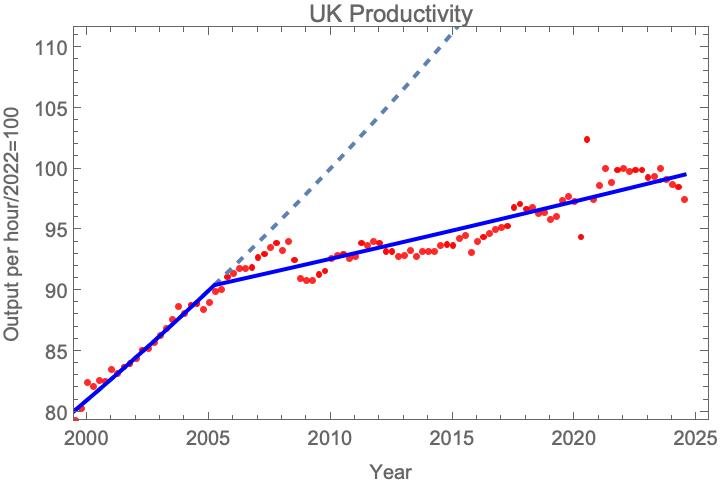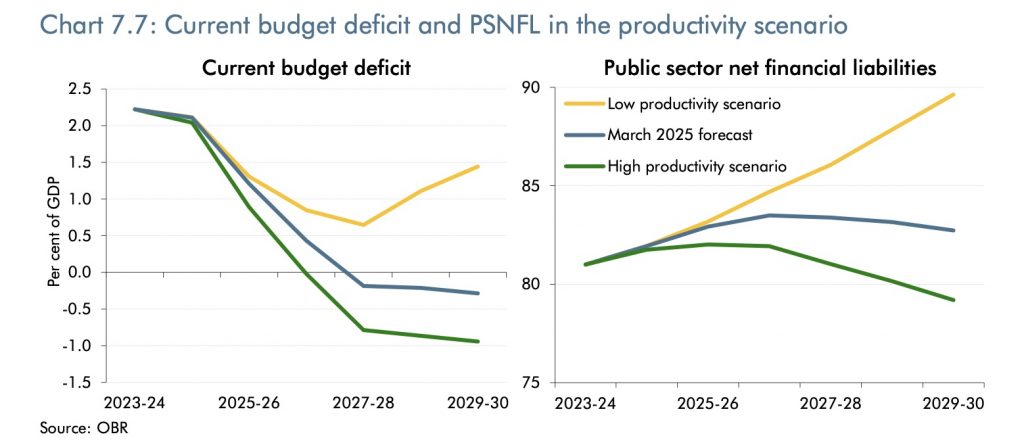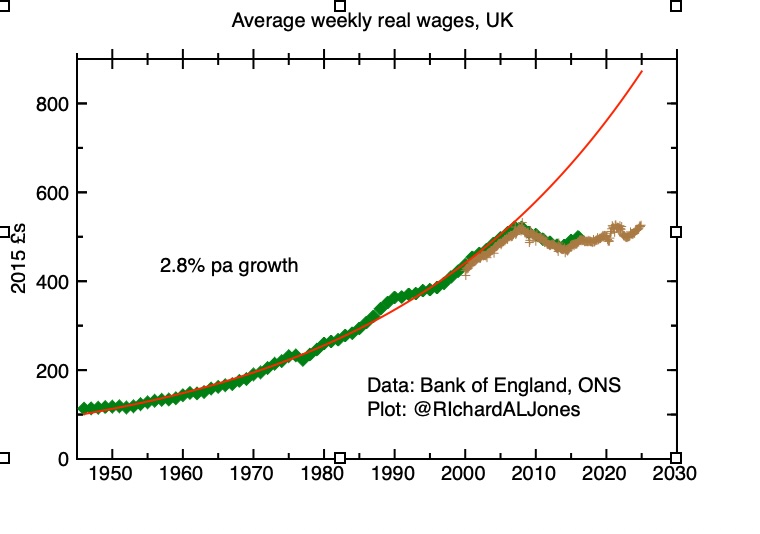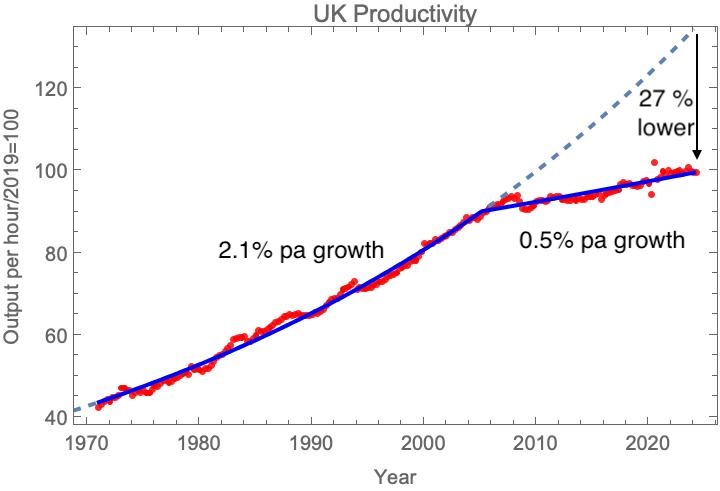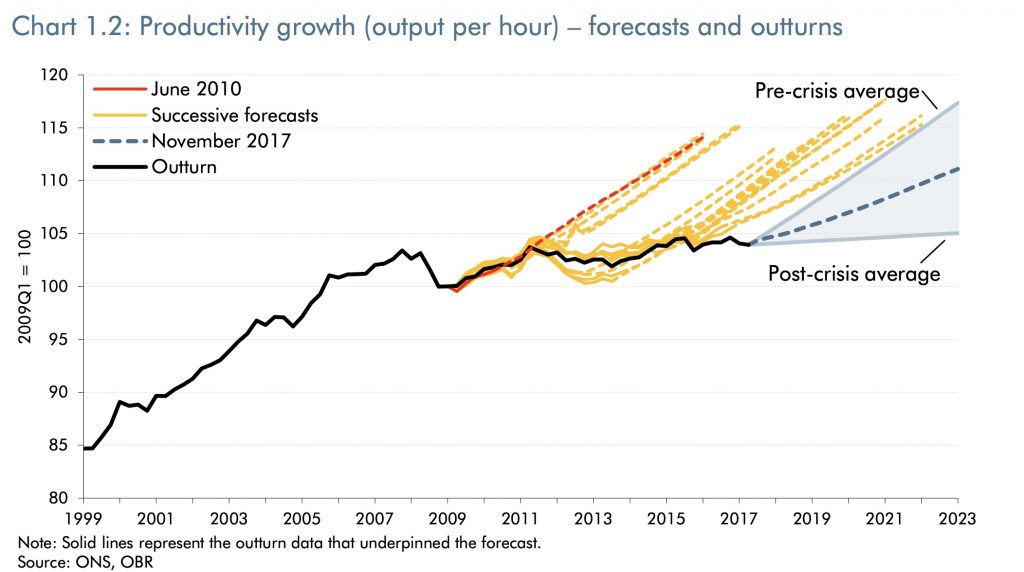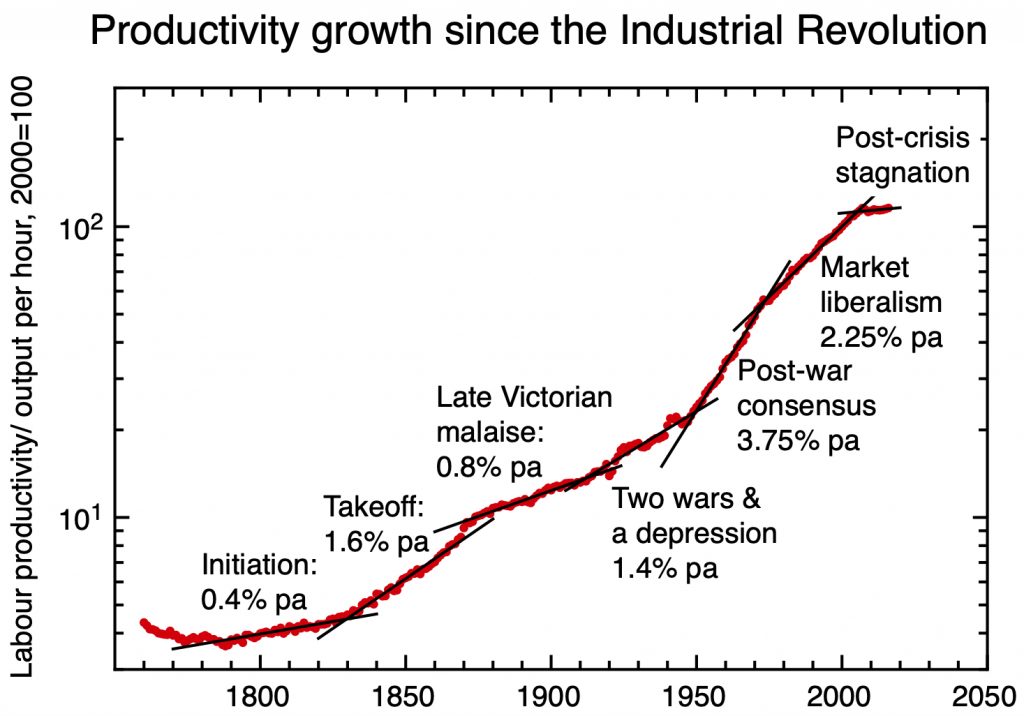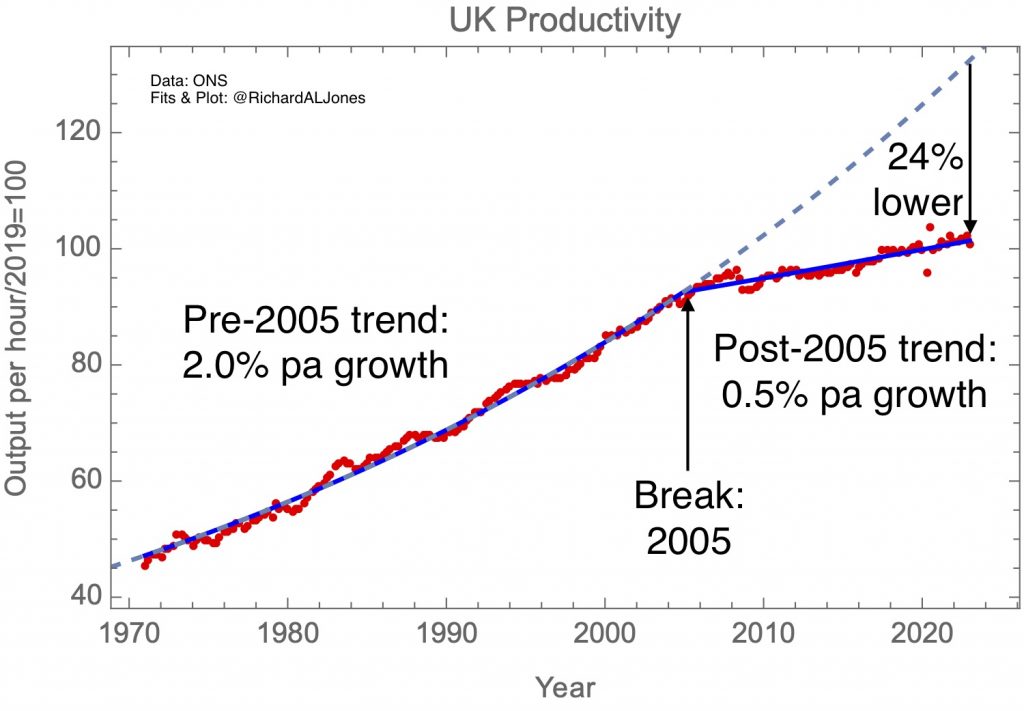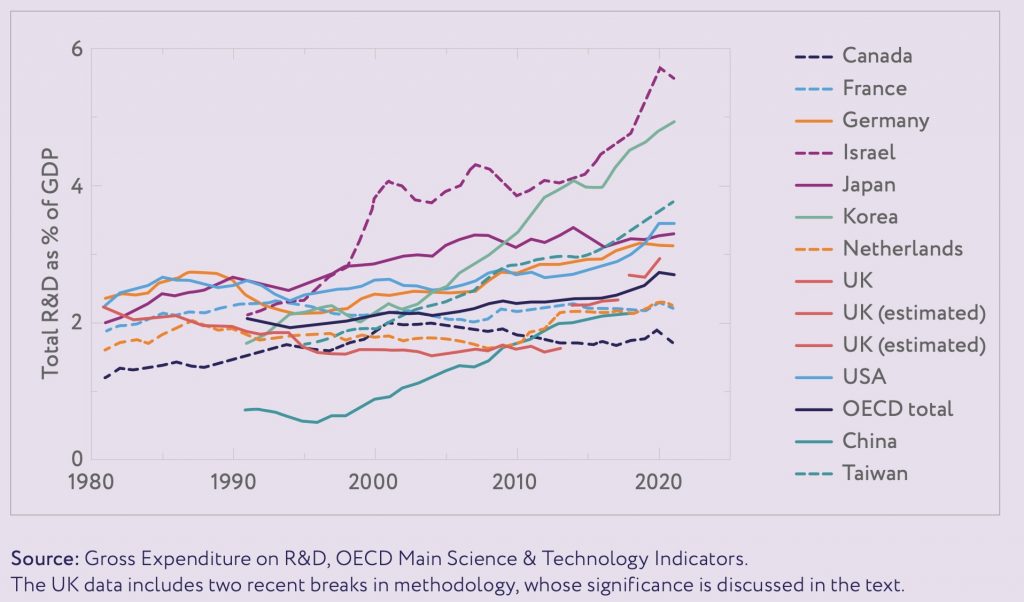This is the third and concluding part of a series of blogposts exploring the history of the UK’s nuclear programme. The pivot point of that programme was the decision, in the late 60’s, to choose, as the second generation of nuclear power plants, the UK’s home developed Advanced Gas Cooled Reactor (AGR) design, instead of a light water reactor design from the USA. This has been described as one of the worse decisions ever made by a UK government.
In my first post, “On the uses of White Elephants”, I discussed the way the repercussions of this decision have influenced UK government thinking about large infrastructure projects.
In the second post, “What led to the AGR decision? On nuclear physics – and nuclear weapons” I turned to consider the technical and political issues that led to this decision.
In this post, I bring the story up to date, discussing why post-2010 plans for new nuclear build have largely failed, and look to the future, with new ambitions for small modular reactors – and, ironically, a potential return to high temperature, gas cooled reactors that represent an evolution of the AGR.
Into the 2010’s and beyond – the UK’s failed Nuclear New Build programme
In the early 2010’s, the Coalition Government developed an ambitious plan to replace the UK’s ageing nuclear fleet, with new light water reactors to be built on the existing nuclear sites, involving four different designs from four different vendors. The French state nuclear company was to build 2 of its next generation pressurised water reactors – the European Pressurised Water Reactor (EPR) – at Hinkley, and another 2 at Sizewell. The Chinese state nuclear corporation, CGN would install 2 (or possibly 3) of its own PWR designs at Bradwell. At Moorside, in Cumbria, Toshiba/Westinghouse would build 3 of its AP1000 PWRs. At Wylfa, in North Wales, Hitachi would build two Advanced Boiling Water Reactors, with another two ABWRs to be built at Oldbury. In total this would give 18 GW of new nuclear capacity, producing roughly double the output of the AGR fleet. In 2013, this programme formally got underway, with the announcement of a deal with EDF to deliver the first of these new plants, at Hinkley Point.
This programme has largely failed. A decade on, only one project is under construction – Hinkley Point C, where the best estimate for when the two EPRs will come into service is 2030. The cost for this 3.2 GW capacity is now estimated as being between £31 bn and £34 bn, in 2015 prices, compared to an original estimate of £20 bn. To put this into context, the last nuclear power station built in the UK, the PWR at Sizewell B, cost about £2 bn, in 1987 prices for a 1.2 GW unit. Scaling this to the 3.2 GW capacity of the Hinkley Point project, and accounting for inflation, this would correspond to about £12 bn in 2015 prices. Where has this 250% increase in nuclear construction cost since Sizewell B come from? There are essentially two broad classes of reasons.
Firstly, more recent designs of pressurised water reactor, such as the EPR, or the Westinghouse AP1000, have a number of new safety features, to mitigate some of the fundamental weaknesses of the pressurised water reactor design, particularly its vulnerability to loss of coolant accidents. These new features include methods for passive cooling in the case of loss of power to the main cooling system, a “core catcher” system which contains molten core material in the event of a meltdown, and more robust containment systems, designed to resist, for example, an aircraft crashing into the reactor building. These new features all add unavoidable extra cost.
In addition to these unavoidable cost increases, some of the increase in construction cost must reflect a substantial real reduction in the UK’s ability to deliver a big complex project like a nuclear power station. One would hope that, if subsequent power stations are built to the same design with the construction teams kept in place, in the light of experience, the development of functional supply chains, and the creation of a skilled workforce, these costs could be reduced.
A sister plant to Hinkley Point, at Sizewell, has received a nuclear site license, but awaits a final investment decision. The capital for Hinkley Point C was provided entirely by its investors, which included the French state-owned energy company EDF and the Chinese state nuclear company CGN, in return for a guarantee of a fixed price for the electricity the plant generated over the first 35 years of operation. Thus the cost of the overrun in budget is borne by the investors, not the UK government or UK consumers. The deal was constructed in a way that was very favourable to the investors, so there was some cushion there, but the experience of Hinkley Point C means that it’s now impossible to attract investors to build further power stations on these terms. The financing for Sizewell C, if it goes ahead, will involve more direct UK state investment, as well as payments to the company building it while the reactor is under construction. These up-front payments will be added to electricity consumers’ bills through the so-called “Regulated Asset Base” mechanism, reducing the cost to the company of borrowing money during the long construction period.
So, sixteen years on from the in-principle commitment to return to nuclear power, no plant has yet been completed, and the best that can be hoped for from the plan to build 18 GW of new capacity is that we will have 6.4 GW of capacity from Hinkley C, and Sizewell C, if the latter goes ahead.
Why has the UK’s nuclear new build programme failed so badly? The original plans were misconceived on many levels. The plan to involve the Chinese state so closely seemed naive at the time, and given the changed geopolitical environment since then, it now seems almost unbelievable that a UK government could countenance it. The idea of having multiple competing vendors and designs makes it much more difficult to drive costs down through “learning by doing”; the most successful build-outs of nuclear power – in France and Korea – have relied on “fleet build” – sequential installations of standardised designs. And the reliance on overseas investors and overseas designs meant that the UK had no control over the supply chain, meaning that little of the high value work involved in the programme would benefit the UK economy.
At the root of this failure were the UK government’s unwise ideological commitments to privatised energy markets, making it resist any subsidies for nuclear power, and refuse to issue new government debt to pay for infrastructure. The legacy of the run-down of the UK’s civil nuclear programme in the 1990’s was a lack of significant UK government expertise in the area, making it an uninformed and naive customer, and a lack of an industry in the UK in a position to benefit from the expenditure.
Could there be another way? Since 2014, the UK government has expressed interest in the idea of small modular reactors (SMRs), and has given some support for design studies, with the UK company Rolls-Royce setting up a unit to commercialise them.
Back to the future – hopes for light water small modular reactors
There’s been a seemingly inexorable trend towards larger and larger pressurised water reactors – and, as we have seen at Hinkley C, that trend of increasing size has been accompanied by a dismal record of cost overruns and construction delays. There are, in principle, economies of scale in operating costs to be gained with very large units. But, as I’ve stressed above, the economics of nuclear power is dominated by the upfront capital cost of building reactors in the first place. If one, instead, built multiple smaller reactors, small enough for much of the construction to take place in factories, where manufacturing processes could be optimised over multiple units, one might hope to drive the costs down through “learning by doing”. This is the logic behind the enthusiasm for small modular reactors.
There’s nothing new about a small pressurised water reactors – by the standards of today’s power reactors, Admiral Rickover’s submarine reactors were tiny. Significantly, as I discussed above, the only remaining UK capability in nuclear reactors is to be found in Rolls-Royce, the company that makes reactors for the UK Navy’s submarines. But the design criteria for a submarine reactor and for a power reactor are very different – while the experience of designing and manufacturing submarine reactors will have some general value in the civil sector, the design of a civil small modular reactor will need to be very different to a submarine reactor.
Rolls-Royce is one of five companies currently bidding for a role in a UK civil SMR programme. Its design has currently passed the second of three stages in the process of getting regulatory approval for the UK market. The Rolls-Royce proposal is for a 470 MWe pressurised water reactor, using conventional PWR fuel of low enrichment (in contrast to the very highly enriched fuel used in submarine reactors). The design is entirely new, though technically rather conservative.
A power output of 470 MWe is not, in fact, that small – this is very much in the range of reactor powers of civil PWRs that were being built in the early 1970’s – compare, for example, the VVER-440 reactors built by the USSR and widely installed and operating in the former USSR and Eastern Europe. The Rolls-Royce design, in contrast to the VVER-440s, does include the safety features to be found in the larger, recent PWR designs, including much more robust confinement, “core catcher”, and passive cooling to cope with a loss of coolant accident, and it will incorporate much more modern materials, control systems, and manufacturing technologies.
There have been suggestions that SMRs could be sited more widely across the country, in towns and cities outside regular nuclear sites. This isn’t the plan for any UK SMRs – they are in any case too large for this to make sense. Instead, the idea is to have multiple installations in existing licensed nuclear sites, such as Wylfa and Oldbury. The Rolls-Royce design is currently undergoing the final stage of its generic design approval. It is one of five potential vendors currently participating in a UK government competition for further support towards deployment of a light water small modular reactor in the UK.
The other entrants to the SMR competition are two well-established vendors of large light water reactors – Westinghouse and GE-Hitachi, and two more recent entrants into the market, from the USA – Holtec and NuScale. Since none of these companies has actually delivered an SMR, the decision will have to be made on judgements about capability: experience shows us that there can be no certainty about cost until one has been built. But, in making the decision, the UK government will need to decide how strongly to weight the need to rebuild UK industrial capacity and nuclear expertise against pure “value for money” criteria.
The Next Generation? Advanced Modular Reactors
The light water SMR represents an incremental update of a technology developed in the 1950’s, at a scale that was being widely deployed in the 1970’s. Is it possible to break out from the technological lock-in of the light water reactor, to explore more of the very wide possible design space of possible power reactors? That is the thinking behind the idea of developing an Advanced Modular Reactor – keeping the principle of relatively small scale and factory based modular construction, but using fundamentally different reactor designs, with different combinations of moderator and coolant to achieve technical advantage over the light water reactor. In particular, it would be very attractive to have a reactor that ran at a significantly higher temperature than a light water reactor. A high temperature reactor would have higher conversion efficiency to electrical power, and in addition it might be possible to use the heat directly to drive industrial processes – for example making hydrogen as an energy vector and as a non-oil based feedstock for the petrochemical industry, including to make synthetic hydrocarbons for zero carbon aviation fuel.
We are also seeing a resurgence of interest in reactors using unmoderated (fast) neutrons. This is partly motivated by the possibility of breeding fissile material, thus increasing the efficiency of fuel use, and partly by the fact that fast neutrons can induce fission in the higher actinides that are particularly problematic as contaminants of used nuclear fuel. There’s an attractive symmetry in the idea of using the UK’s very large stock of civil plutonium to “burn up” nuclear waste.
The UK government commissioned a technical assessment of potential candidates for an advanced modular reactor. This considered fast reactors cooled by liquid metals – both sodium and lead, as well as a gas-cooled fast reactor. Another intriguing possibility that has generated recent interest is the molten salt reactor, where the fissile material is dissolved in fluoride salts. Here the molten salt acts both as fuel and coolant. Reactor designs using a thermal neutron spectrum include an evolution of the boiling water reactor which uses water in the supercritical state. All of these designs have potential advantages, but the judgement of the study was that, of these potential designs, only the sodium fast reactor was potentially close enough to deployment to be worth considering.
However, the study made a clear recommendation in favour of a high temperature, gas cooled thermal neutron reactor. Here, the moderator is graphite and the coolant is helium, as in the Advanced Gas Cooled Reactors. The main difference with AGRs is that, in order to operate at higher temperatures, the fuel is presented in spherical particles around a millimetre in diameter, in which uranium oxide is coated with graphite and encapsulated in a high temperature resistant refractory ceramic such as silicon carbide. There is considerable world-wide experience in making this so-called tristructural isotropic (TRISO) fuel, which is able to withstand operating temperatures in the 700 – 850 °C range. Modifications of these fuel particles – for example using zirconium carbide as the outer later – could permit operation at even higher temperatures, high enough to split water into hydrogen and oxygen through purely thermochemical processes. But this would need further research.
A Chronicle of Wasted Time
What’s striking about many of the proposals for an advanced modular reactor is that the concepts are not new. For example, work on sodium cooled fast reactors began in the UK in the 1950s, with a full scale prototype being commissioned in 1974. Lead cooled reactors were built in both the USA and the USSR. Molten salt reactors perhaps represent the most radical design departure, but even here, a working prototype was developed in Oak Ridge National Laboratory, USA, in the 1960s.
One of the reasons for the UK AMR Technical Assessment favouring the High Temperature Gas Reactor is that it builds on the experience of the UK in running a fleet of gas cooled, graphite moderator reactors – the AGRs. In fact, the UK, as part of an international collaboration, operated a prototype high temperature gas reactor between 1964 and 1976 – DRAGON. It was in this project that the TRISO fuel concept was developed, which has since been used in operational high temperature gas reactors in the USA, Germany, Japan and China.
At the peak of the 1970’s energy crisis, from 1974 to 1976, construction began on more than a hundred nuclear reactors across the world. Enthusiasm for nuclear power dwindled throughout the 1980’s, suppressed on the one hand by the experience of nuclear accidents at Three Mile Island and Chernobyl, and on the other by an era of cheap and abundant fossil fuels. In the three years between 1994 to 1996, just three new reactors were begun worldwide. In this climate, there was no appetite for new approaches to nuclear power generation, technology development stagnated, and much tacit knowledge was lost.
Some concluding thoughts
In 1989, the UK’s Prime Minister Margaret Thatcher made an important speech to the United Nations highlighting the importance of climate change. It was her proposal that the work of the Intergovernmental Panel on Climate Change was extended beyond 1992, and that there should be binding protocols on the reduction of greenhouse gases; naturally, given her political perspective, she stressed the importance of generating continued economic growth, and of the importance of private sector industry in driving innovation. She reasserted her support for nuclear power, which she described as “the most environmentally safe form of energy”. As far as the UK was concerned, “we shall be looking more closely at the role of non-fossil fuel sources, including nuclear, in generating energy.”
Since Thatcher’s speech, another thousand billion tonnes of carbon dioxide have been released into the atmosphere from industry and burning fossil fuels, leading to an increase in the atmospheric concentration of CO2 from 350 parts per million in 1989 to 427 ppm now. To be fair, one should recognise that the worldwide nuclear power industry has produced 390,000 tonnes of spent nuclear fuel, producing 29,000 cubic meters of high level waste. This needs to be permanently disposed of in deep geological repositories, the first of which is nearing completion in Finland.
But even as Thatcher was speaking, the expansion of nuclear power was stalling. In the UK it was Thatcher’s own Chancellor of the Exchequer who had in effect killed nuclear power, through the lasting impact of his ideological commitment to privatised energy markets in an environment of cheap fossil fuels.
To be clear, what killed the UK’s nuclear energy programme was not a wrong choice of reactor design; it was a combination of high interest rates and low fossil fuel prices, all in the context of a worldwide retreat from nuclear new build, with a strong anti-nuclear movement, driven by nuclear accidents in Three Mile Island and Chernobyl, by the (correctly) perceived connection between civil nuclear power and nuclear weapons programmes, and by the problem of nuclear waste. The circumstances of the UK were particularly helpful for a continued dependence on fossil fuels; the discovery of North Sea oil and gas gave the UK, now a net energy exporter, a 15 year holiday from having to worry about the geopolitics of energy dependence.
But, for industrial nations, security of access to adequate energy supplies has always been an issue of existential importance, too often driving conflict and war. The Ukrainian war has given us a salutary reminder of the importance of energy supplies to geopolitics. Energy is never just another commodity.
The effective termination of the UK’s civil nuclear programme in the 1990’s undoubtedly saved money in the short-term. That money could have been used for investment – future-proofing the UK’s infrastructure, in supporting R&D to create new technologies. Political choices meant that it wasn’t – this was a period of falling public and private investment – instead it supported consumption. But there were costs, in terms of losing capacity, in industry and the state. Technological regression is possible, and one could argue that this has happened in civil nuclear power. In the UK, we have felt the loss of that capacity now that policy has changed, very directly in the failure of the last decade’s new nuclear build. Energy decisions should never just be about money.
